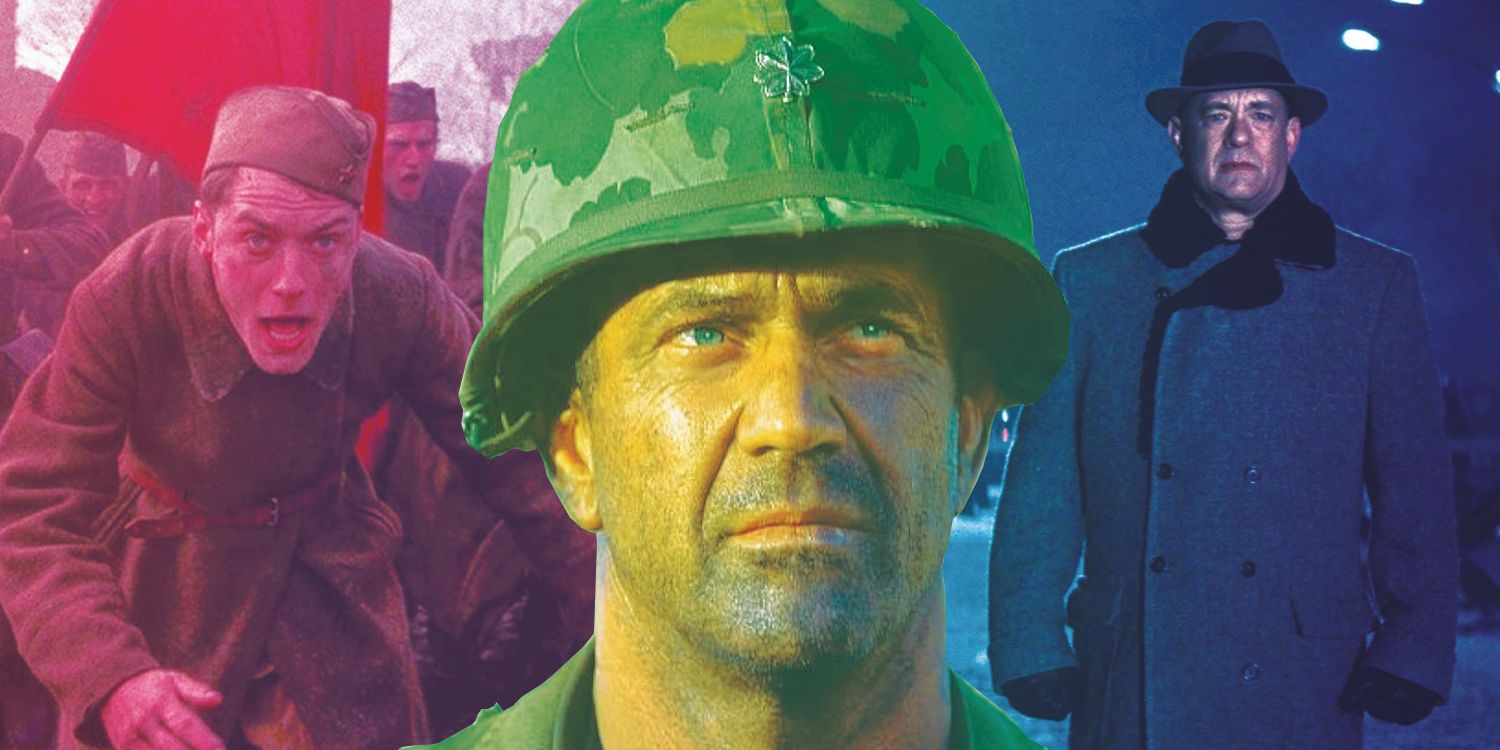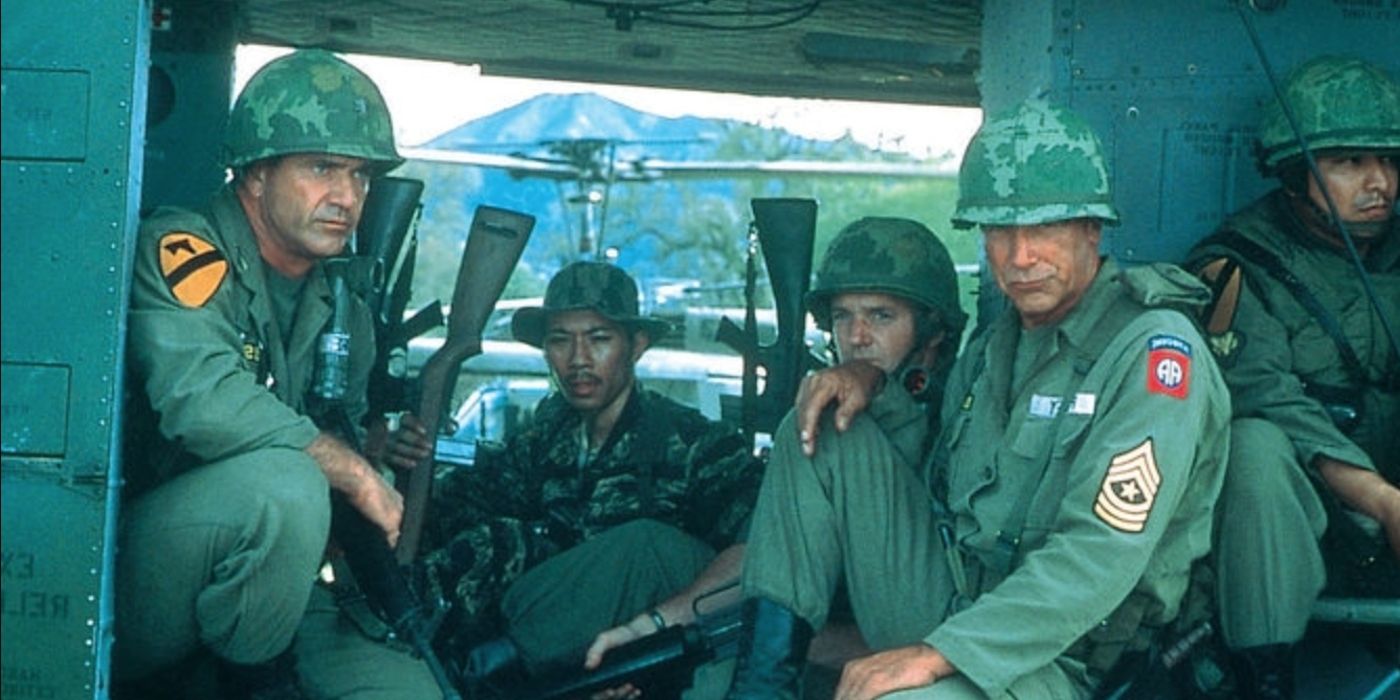A military historian and history professor analyzes We Were Soldiers, a 2002 Vietnam War movie starring Mel Gibson. Written and directed by Randall Wallace, the war movie serves as an adaptation of the late Lieutenant General Hal Moore and journalist Joseph L. Galloway’s book, We Were Soldiers Once… And Young. The film, which stars Gibson as Lieutenant General Hal Moore, dramatizes the 1965 battle of Ia Drang.
In a recent video for Insider, military history professor Bill Allison shares his thoughts on We Were Soldiers, revealing that the film features a number of inaccuracies.
The historian takes issue with a number of scenes, including the film’s depiction of the People’s Army of Vietnam (PAVN) using extensive networks of tunnels, which was actually more of a Viet Cong tactic. Check out a selection Allison’s other observations below, in addition to his rating out of 10:
“This is depicting the 1965 battle of the Ia Drang Valley. This is really the first time where American forces face off against the People’s Army of Vietnam, the PAVN… This is a PAVN operation, [but] those were clearly Viet Cong [shown on screen]. They had the conical hat, the black [clothes].
“The way the PAVN reacts, it seems like there’s this mass wave assault, and that’s actually kind of accurate. The battle of Dien Bien Fu in 1954 against the French, General Giáp just ordered wave after wave of these costly assaults. They won the battle, but at great cost, and Giáp was criticized for this. But this kind of stays in the doctrine, if you will, of the PAVN.
“In this scene, part of the tactic is to get as close to the Americans as possible. If you can get close and hug your enemy, that makes it much more difficult to call in air strikes. But they’re learning. This is early, we’re talking 1965 here. I don’t think the PAVN is fully appreciative of the capability of American air power.
“What happens when you call ‘Broken Arrow,’ all air assets in the area are supposed to converge on your position and drop on the coordinates that you give. And that’s what happens here, and that’s real. But it’s not Hal Moore going, ‘Broken Arrow, Broken Arrow.’ According to the book, it was the forward air controller. Minor inaccuracy, but Mel Gibson has to be the hero, right?
“I know a lot of people who like this film because it’s dramatic, if they’ve read the book, especially, but it fails on a lot of levels, I think. I’d give it a five [out of 10].

10 War Movies That Showed Both Sides Of The War
War movies that didn’t shy away from revealing the perspectives of both sides of the conflict are typically also lauded for their historical accuracy.
How Was We Were Soldiers Received?

Made on a budget of $75 million, We Were Soldiers ended up disappointing during its theatrical run. The film, despite featuring the acting talents of Gibson, Sam Elliot, Greg Kinnear, Chris Klein, Keri Russell, and Jon Ham, grossed just over $114.6 million worldwide, meaning it may not have broken even.
The reviews for the film were generally positive, but certainly not as glowing as those for other Vietnam War movies like Apocalypse Now, Platoon, or Full Metal Jacket. Critics praised the film’s attempts at exploring the human figures involved in the Battle of Ia Drang Valley, but took issue with certain war movie clichés scattered throughout. Other critics took issue with the film’s excessive war violence, though the unflinching portrayal of war is also listed in some reviews as one of the film’s strong suits.
Roger Ebert gave the film 3.5 out of 4 stars, praising the “clear” battle scenes and the balancing of the action on the front lines with the quieter story being told on the home front. He also singles out a title card in the movie that honors the PAVN forces that lost their lives that day as representative of the movie’s broader depiction of the Vietnamese soldiers. While We Were Soldiers is certainly not without flaws, both in terms of the history it is depicting and its storytelling, the film remains, if nothing else, a thought-provoking depiction of war.




